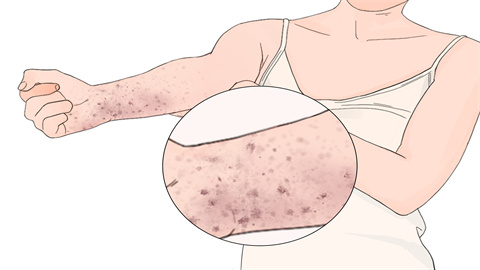What are the differences between syphilis rash and common rash?
Generally, syphilis rash and common rashes differ in terms of causes, affected body sites, associated symptoms, disease course characteristics, and treatment methods. If any abnormalities occur, prompt medical attention is recommended. Detailed analysis is as follows:

1. Causes: Syphilis rash is caused by infection with Treponema pallidum and represents a cutaneous manifestation of a sexually transmitted disease, with infectivity; common rashes are often caused by factors such as allergy, viral infection, or bacterial infection, such as exposure to allergens or viral invasion due to colds, and most are non-infectious.
2. Affected Sites: Syphilis rash can occur on the skin and mucous membranes throughout the body, including the trunk, limbs, palms, and soles, often presenting with symmetrical distribution; common rashes are usually localized and often associated with specific causes, such as rashes caused by allergies commonly appearing at the site of allergen contact, and viral infection-related rashes possibly concentrated on the trunk or face.
3. Associated Symptoms: Syphilis rash is often accompanied by systemic symptoms such as generalized lymphadenopathy, low-grade fever, and fatigue. Some patients may have a history of genital chancre; associated symptoms of common rashes vary depending on the underlying cause—for example, allergy-induced rashes may be accompanied by itching, and virus-induced rashes may be associated with fever and sore throat, but typically lack specific manifestations such as generalized lymphadenopathy.
4. Disease Course: If left untreated, syphilis rash may spontaneously resolve after several weeks or months, but this does not indicate disease resolution—it may progress to a latent stage, with potentially more severe symptoms developing later; common rashes typically resolve within a short period after removal of the causative factor or symptomatic treatment, and usually do not leave sequelae or enter a latent phase after resolution.
5. Treatment Approaches: Syphilis rash requires treatment with anti-syphilitic medications to control the condition by eliminating Treponema pallidum. Treatment must follow a standardized course, as incomplete treatment may lead to recurrence or disease progression; treatment of common rashes depends on the underlying cause—for example, allergy-induced rashes are treated with antiallergic medications, and bacterial infection-related rashes are treated with antimicrobial agents, with gradual improvement following removal of the causative factor.
If skin rashes of unknown cause appear, especially when accompanied by systemic discomfort or a specific exposure history, timely medical evaluation is necessary. If diagnosed as syphilis rash, it is essential to strictly follow medical instructions to complete the treatment course and avoid transmitting the infection to others; for common rashes, once the underlying cause is identified, appropriate symptomatic management should be implemented, with prevention of scratching to avoid secondary infection.





